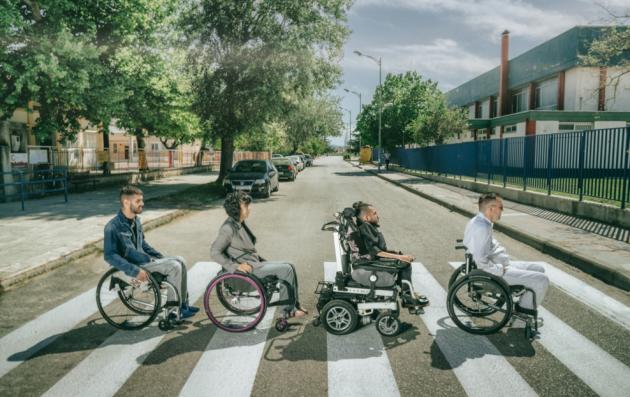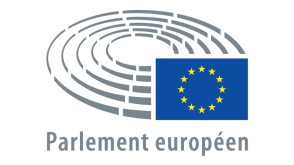
Involving Disabled People in Creating a City Accessible for All
Komotini, a city in northeastern Greece, has become a shining example of how accessibility and social inclusion can transform urban life. By actively involving disabled people in the city’s development, Komotini has created a model that inspires other cities across Europe. Let’s explore how this remarkable transformation unfolded.
A Multi-Phase Urban Development Programme
Komotini’s journey began with the Urban II Community Initiative Programme (2000-2006). This initiative funded urban regeneration interventions aimed at encouraging economic competitiveness and integrating the most vulnerable groups of the city’s multicultural population.
The city didn’t stop there. The second and third phases (2007-2020) expanded the efforts, adding accessible infrastructure such as a bike lane network, open spaces, public buildings, and schools. The municipality, in partnership with a local NGO, established social structures, including a community centre, halfway houses, and activity centres for disabled people. The creation of smart city technologies and an accessibility-focused app further empowered Komotini’s disabled residents and visitors.
A City-Wide Strategy for Inclusion
To ensure accessibility as a horizontal and integrated policy, Komotini developed a series of strategic plans: operational, tourism, urban development, sustainable urban mobility, and urban accessibility plans. In each, disabled people were not just consulted—they were equal partners, participating in advisory boards and steering committees. This inclusive planning process ensured that disabled people oversee halfway houses, after-school programmes, and daily activity centres, with the municipality offering infrastructure and financial support.
Komotini also invites disabled people to complete their rehabilitation in the city, fostering a welcoming environment that often inspires return visits as tourists. This engagement extends to professionals from the local university, social workers, gymnasts, and police cadets, who learn about the accessibility process and help transfer it to their home cities.
The Results: A Fully Accessible City
Over two decades, Komotini has transformed from a medieval city into a model of accessibility, supported by funding from the Regional Operational Funds of East Macedonia and Thrace (2007-2020) and ensuring secure funding of up to EUR 30 million for 2021-2027. Key achievements include:
- 90% of schools (73 buildings) are now accessible, all with disabled WC facilities.
- 47 out of 60 playgrounds made accessible.
- 75% of city-owned buildings are accessible.
- An accessible city centre, including public buildings, shops, and mapped walkways viewable online.
- Accessible public transport: bus and train stations, local buses, taxis, and designated parking places.
- Mapped residences of disabled people to support emergency services.
- Training for 444 disabled people and 5,300 students.
- Twelve new beach access points with innovative technological solutions.
A Participatory Approach That Works
A key factor in Komotini’s success is its participatory approach. Disabled people and their organisations, such as the Disabled Association of Perpato, are deeply involved in decision-making. They contribute to accessibility initiatives, disability rights advocacy, and the implementation of municipal projects and civil protection plans. The association’s involvement in food aid programmes, social enterprises, and urban intervention design has inspired other local NGOs to adopt similar practices.
In the last three years, this collaborative model has made a tangible difference:
- 966 disabled people received training.
- 1,519 were assisted or referred to services.
- 5,825 received counselling (in person or by phone).
- 8,405 transportations took place.
- 60 received specialised services in two day-care centres.
Why Komotini’s Good Practice Should Be Transferred to Other Cities
Komotini’s approach aligns with global and European policy frameworks, including:
- UN Sustainable Development Goal (SDG) 10 (Reduced inequalities).
- The EU Territorial Agenda 2030, promoting equal opportunities and access to public services.
- The New Leipzig Charter on sustainable urban development.
Accessibility is a core priority, integrated across all city planning documents. Disabled people not only benefit from these efforts but actively shape them, running services such as halfway houses, after-school programmes, and daily activity centres, with the municipality offering support.
Key Elements for Successful Transfer:
For cities aiming to replicate Komotini’s success, essential elements include:
- High-level engagement from city authorities.
- Collaboration with stakeholders and beneficiaries.
- Political commitment and access to financial resources.
- A clear roadmap with concrete actions and the determination to drive change.
Komotini’s story proves that with genuine commitment and the active participation of disabled people, cities can become more inclusive, welcoming, and inspiring for everyone. Let’s build cities that work for all—starting with accessible streets, schools, and public spaces, and most importantly, with policies that see disabled people as equal partners in shaping the future.
More Information
